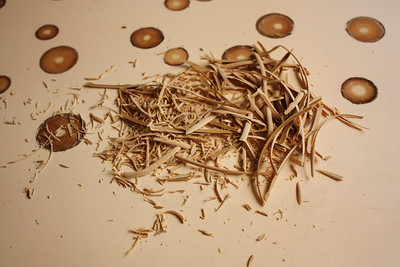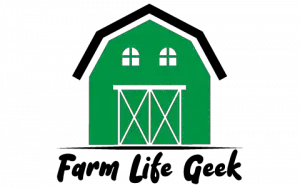When it comes to flooring for a goat barn, there are many different options to choose from. Each has its own advantages and disadvantages, so it’s important to carefully consider all of them before making a decision. Some of the most popular flooring materials for goat barns include concrete, asphalt, linoleum, and rubber.
In this article, we’ll take a closer look at each of these flooring materials, as well as some of the other less common options, in order to help you choose the best one for your needs.
What are some common goat barn flooring materials?
There are a few common types of materials used for goat barn floors. These include:
-Linoleum: Linoleum is a popular choice for goat barn floors because it is durable and easy to clean. It is also relatively inexpensive.

-Rubber: Rubber flooring is another popular choice for goat barns. It is durable and slip-resistant, making it a good option for safety.
-Concrete: Concrete is a popular choice for goat barn floors because it is durable and easy to clean. However, it can be cold and hard on the goats’ feet.
Each of these materials has its own advantages and disadvantages. You will need to decide which one is best for your goat barn based on your needs and budget.
What type of floor is best for a goat barn?
There is no definitive answer to this question, as the best flooring material for a goat barn will depend on a number of factors, including the climate, the size and type of goats being housed, and the budget. However, there are a few general things to keep in mind when choosing a floor for a goat barn.
The first is that the floor should be durable and easy to clean. Goats are notoriously messy animals, and their barns can quickly become full of manure and other waste. Therefore, it’s important to choose a flooring material that can withstand a lot of wear and tear and is easy to clean.
Concrete, asphalt, and linoleum are all good choices for durability, while rubber is a good choice for easy cleaning.
The second thing to keep in mind is that the floor should be comfortable for the goats. Goats are very sensitive to cold weather, so a floor that gets too cold in winter can cause them to become ill. Similarly, a floor that gets too hot in summer can make them uncomfortable.
Asphalt and concrete are both good choices for temperature regulation, as they tend to stay cooler in summer and warmer in winter. Linoleum is also a good choice, although it can be a bit slippery for goats.
The third thing to consider is the price. Flooring materials can vary widely in price, so it’s important to choose one that fits your budget. Concrete, asphalt, and linoleum are all relatively affordable options, while rubber is a bit more expensive.
When it comes to choosing the best flooring material for a goat barn, there is no one-size-fits-all answer. The best option will depend on a number of factors, including the climate, the size and type of goats being housed, and the budget. However, there are a few general things to keep in mind when making your decision.
How to install the floor in a goat barn?
Once you’ve chosen the best flooring material for your goat barn, you’ll need to install it. The installation process will vary depending on the type of flooring you’ve chosen.
Concrete, asphalt, and linoleum can all be installed by a professional contractor. However, rubber floors are typically easy enough to install yourself.
- Measure the space where you will be installing the rubber flooring.
- Cut the rubber flooring to size using a sharp knife or scissors.
- Peel the backing off of the rubber flooring and place it in the desired location.
- Press down firmly on the rubber flooring to ensure that it sticks.
- Repeat steps 2-4 until the entire space is covered.
- Enjoy your new, durable, and easy-to-clean floor!
Pros and cons of different types of floors for a goat barn
Now that we’ve looked at some of the most popular flooring materials for goat barns, let’s take a closer look at the pros and cons of each one.
Concrete
Pros:
-Durable
-Easy to clean
-Inexpensive
Cons:
-Can be cold in winter
-Can be hard on goats’ hooves
Asphalt
Pros:
-Durable
-Easy to clean
-Temperature regulating
Cons:
-Can be slippery for goats
Linoleum
Pros:
-Easy to clean
-Temperature regulating
Cons:
-Can be slippery for goats
-More expensive than some other options
Rubber
Pros:
-Easy to clean
-Comfortable for goats
Cons:
-More expensive than some other options
Others (clay, dirt, grass, etc.)
Pros:
-Inexpensive
-Natural feeling for goats
Cons:
-Can be difficult to clean
-May not be suitable for all climates
Composite Materials (a mixture of two or more of the above)
Pros:
-Can be customized to meet your needs
– often more durable than single-material floors
Cons:
-Can be more expensive than some other options
-May be difficult to install yourself
Tips on keeping your floor in good condition
No matter what type of flooring you choose for your goat barn, there are a few things you can do to help keep it in good condition.
Here are a few tips:
-Sweep or vacuum the floor regularly to remove dirt and debris.
-Mop the floor with a mild soap and water solution as needed.
-Avoid using harsh chemicals or cleaners, as they can damage the flooring material.
-Repair any cracks or holes in the floor as soon as possible.
-Make sure the goats have access to clean, fresh water at all times.
By following these tips, you can help keep your goat barn floor in good condition for years to come.
How to repair a floor in a goat barn?
If you have a floor in your goat barn that is starting to show signs of wear and tear, it’s important to take action quickly. The sooner you repair the floor, the less damage will be done.
Here are a few tips for repairing a damaged floor:
-Start by sweeping or vacuuming the floor to remove any dirt or debris.
-Next, use a mild soap and water solution to clean the floor.
-Once the floor is clean, repair any cracks or holes using a suitable material.
-Finally, make sure the goats have access to clean, fresh water at all times.
By following these tips, you can help keep your goat barn floor in good condition for years to come.
What are some common problems with goat barn floors?
There are a few common problems that can occur with goat barn floors. These include:
-Cracks and holes: Cracks and holes can occur in the floor over time. If left unrepaired, they can become bigger and more dangerous.
-Slippery surfaces: Slippery surfaces can be dangerous for goats. They can also make it difficult to clean the floor.
-Damaged flooring: Damaged flooring can be caused by a variety of things, including harsh chemicals and cleaners, wear and tear, and improper maintenance.
If you notice any of these problems with your goat barn floor, it’s important to take action quickly. The sooner you repair the floor, the less damage will be done.
How can I prevent problems with my goat barn floor?
There are a few things you can do to prevent problems with your goat barn floor. These include:
-Regularly sweep or vacuum the floor to remove dirt and debris.
-Mop the floor with a mild soap and water solution as needed.
-Avoid using harsh chemicals or cleaners, as they can damage the flooring material.
-Repair any cracks or holes in the floor as soon as possible.
-Make sure the goats have access to clean, fresh water at all times.
By following these tips, you can help keep your goat barn floor in good condition for years to come.
Conclusion
Flooring is an important consideration when building or renovating a goat barn. The floor needs to be tough and durable, as well as easy to clean and sanitize. There are many different types of flooring materials available, each with its own advantages and disadvantages.
